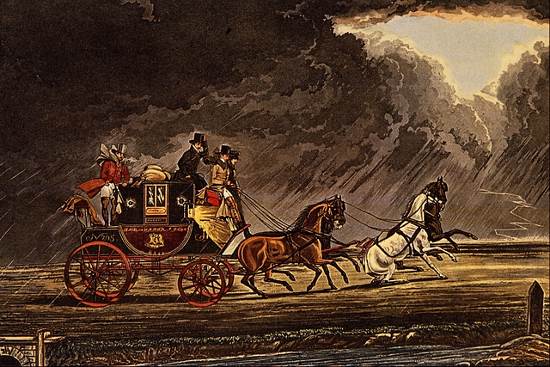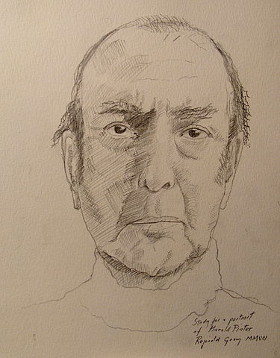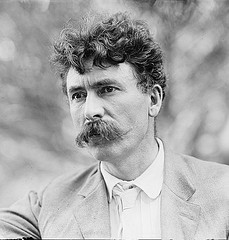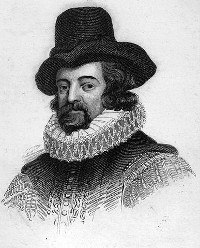
Literature often inspires music, but the reverse is less common. Here’s an intriguing exception: In Music and Literature: A Comparison of the Arts (1948), Calvin S. Brown argues that the third part of Thomas De Quincey’s 1849 essay “The English Mail-Coach” is deliberately structured as the literary equivalent of a musical fugue.
That part of the essay, titled “The Dream-Fugue,” tells how De Quincey’s dreams were dominated by a recent experience in which his carriage had nearly collided with that of a young woman. As De Quincey describes his dreams, the fugue subject is a group of ideas (speed, urgency, and a girl in danger of sudden death) that remain static while the shifting settings and details act as a contrapuntal accompaniment: In the first section a girl dances on a ship that is run down by another ship; in the second she escapes; in the third she runs along a shore and is engulfed in quicksand.
[The] middle part begins with Section IV, and is constructed exactly as it should be. The news of Waterloo and victory, the coach carrying that news, the cathedral seen in the distance and rapidly approached and entered — all these are presentations of material closely connected with the subject; but there is a definite departure from the set statements of this subject found in the exposition. In the middle section we expect at least one direct restatement of the subject in addition to this episodic material; hence we look for another vision of sudden death. We are not disappointed. After a considerable interval the girl of the visions, now an infant, appears directly in the path of the coach, which is thundering up the aisle of the vast cathedral. There is a moment of suspense, and then, just as death seems certain, she vanishes. After a dramatic pause, she reappears as a full-grown woman, on an altar of alabaster, within the cathedral and yet among the clouds. On one side of her is dimly seen the shadow of the angel of death, and on the other her better angel prays for her. What we have here is simply a recurrence of the subject and answer, the counter-subject appearing with the answer only. It will be observed that the answer always saves the victim from the immediate peril presented in the subject, but keeps the idea of further danger. In the single instance where fugue-form does not demand an answer (Section III), the girl goes on to her fate.
In the book, Brown even presents a chart identifying the exposition, the development, and the final section of the fugue. “Most commentators have brushed aside the title of this section with some meaningless comment, but De Quincey’s knowledge of music and his interest in it, together with his passion for intellectual analysis, make it reasonable to suppose that his title was something more than a fanciful name. Actually, De Quincey’s method of producing the musical effect was to follow, as far as the limitations imposed by a different medium would permit, the structure of the musical form. He succeeded in following it far more closely than has been generally realized.”









